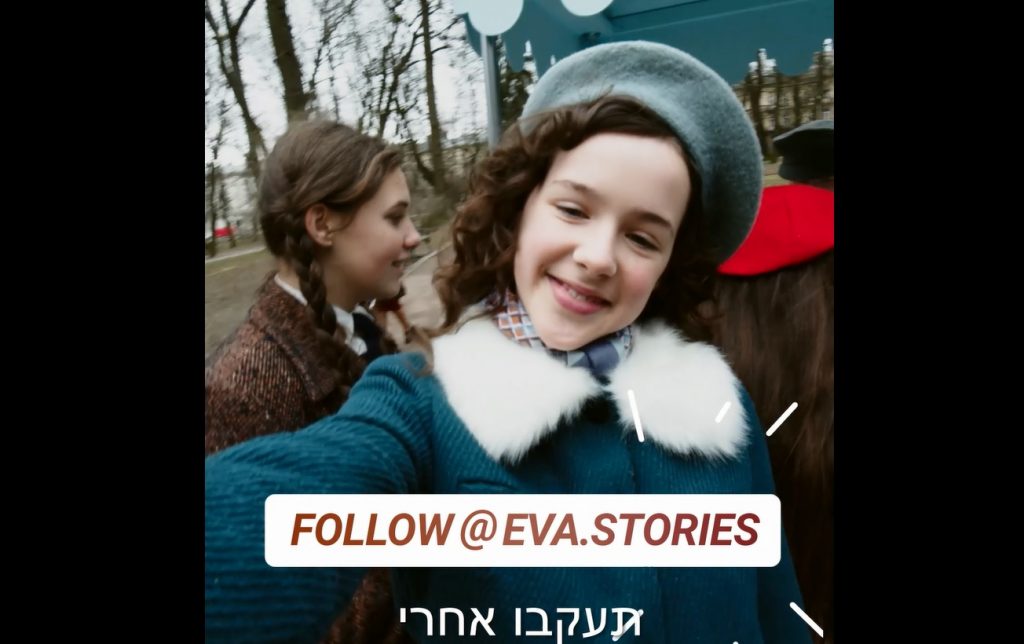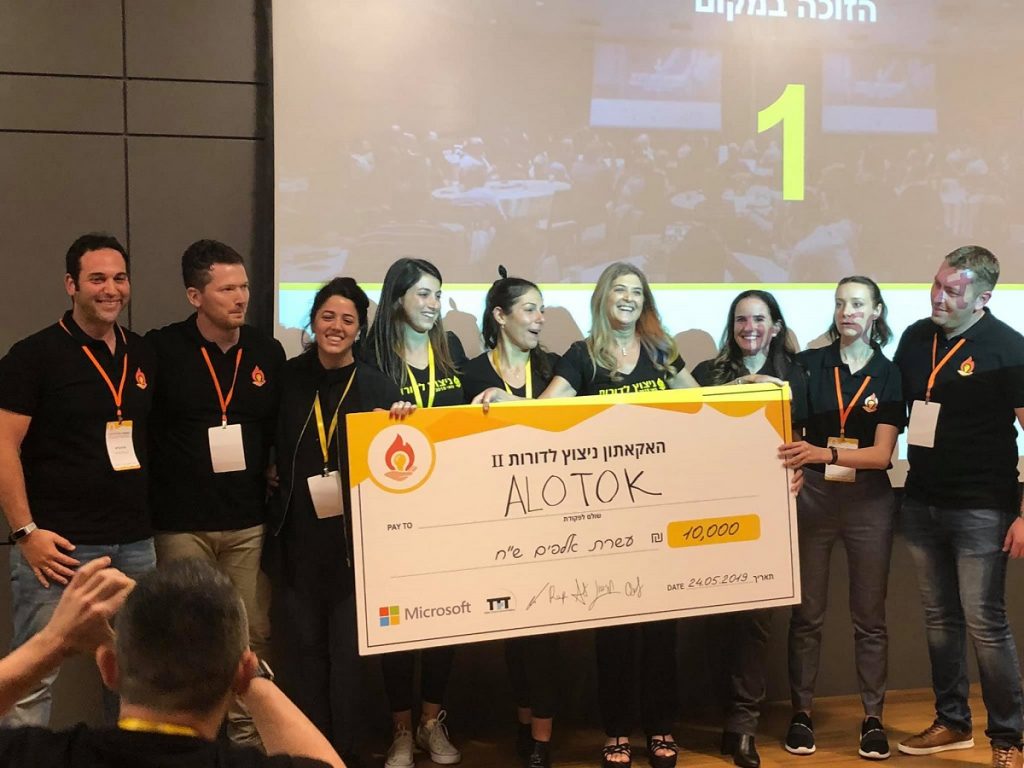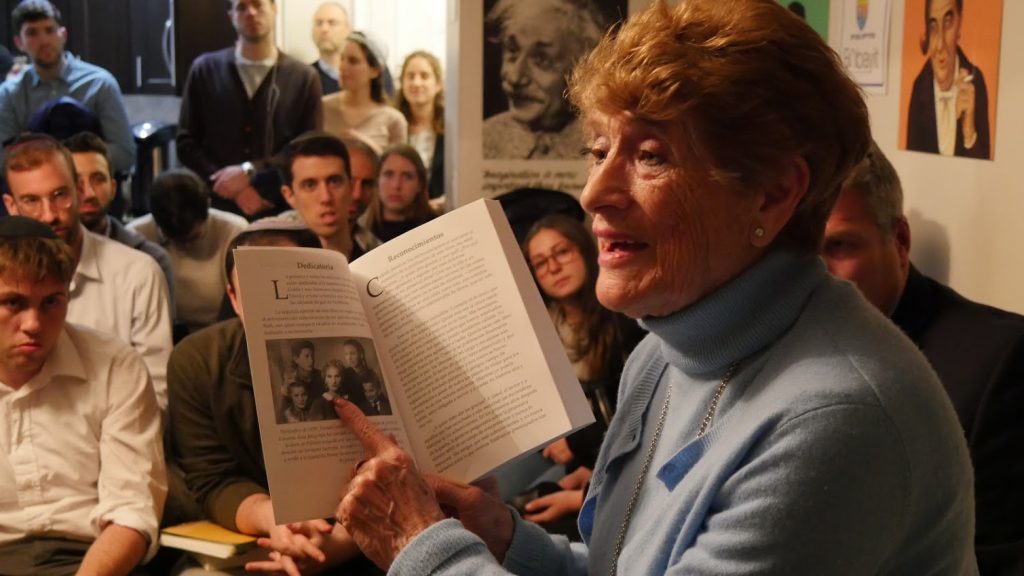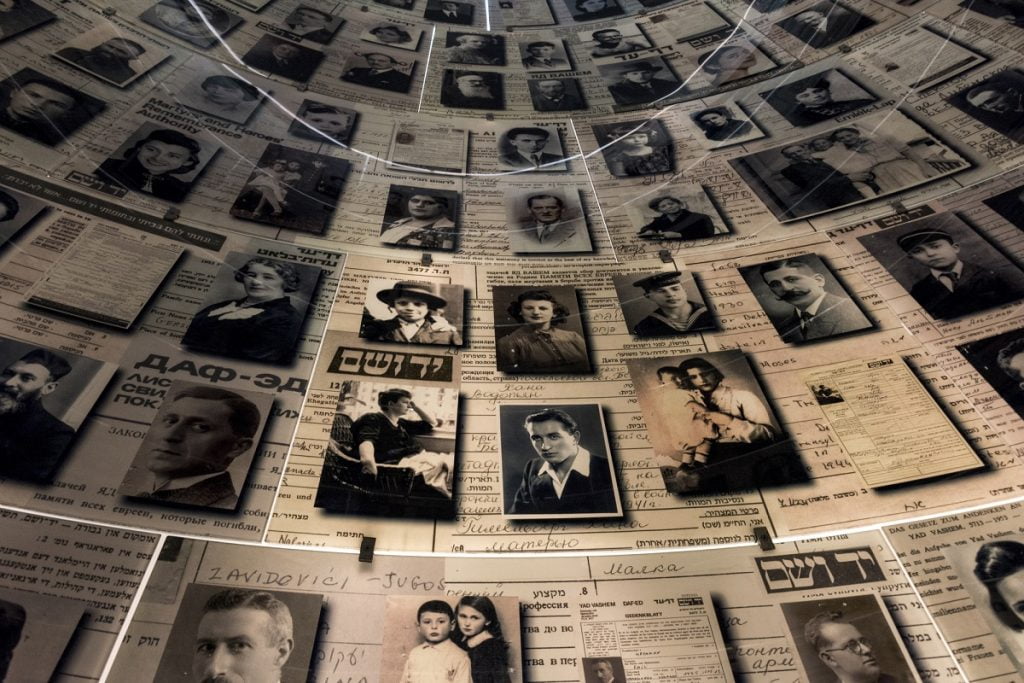Forty-nine delegations from countries across North America, Europe, and Asia are set to converge in Jerusalem on Thursday for the Fifth World Holocaust Forum organized by the World Holocaust Forum Foundation in cooperation with Yad Vashem and the World Holocaust Remembrance Center. The delegations include 41 heads of state, monarchs, members of royal families, and parliamentary leaders.
The forum, entitled “Remembering the Holocaust, Fighting Anti-Semitism,” marks the 75th anniversary of the liberation of the Auschwitz-Birkenau concentration camp and the UN-sanctioned International Holocaust Remembrance Day (marked annually on January 27) to remember the six million Jews murdered across Europe during World War II.
The gathering is considered the biggest diplomatic event in Israel’s history and comes less than a year after a startling report on the resurgence of anti-Semitism worldwide was released by Tel Aviv University’s Kantor Center in conjunction with the European Jewish Congress. The report noted a 13 percent increase in “major” anti-Semitic incidents worldwide in 2018 — 387, compared to 342 in 2017.
Serious incidents of violence and vandalization of Jewish gravestones continued to occur worldwide the past year, particularly in the United States, where Jews have previously felt safe. In the New York area alone, more than half of the 423 reported hate crimes in the city were directed at Jews and attacks in Jersey City, New Jersey, and Monsey, New York shocked the world.
Earlier this week, Israeli Prime Minister Benjamin Netanyahu announced that leaders such as US Vice President Mike Pence, Russian President Vladimir Putin, and French President Emanuel Macron will be at the large-scale event. Other guests include German President Frank-Walter Steinmeier, Ukrainian President Volodymyr Zolensky, and Britain’s Prince Charles, among others.
While the forum has been marked by some controversy — Israel’s Army Radio reported Monday that there were only 30 spots out of 800 reserved for actual Holocaust survivors at the event being held at Warsaw Ghetto Square at Yad Vashem — a response from Yad Vashem said that there are some 200,000 Holocaust survivors living in Israel and it would be impossible to invite even a fraction of them.
This event is “not a public ceremony but rather a gathering of leaders,” Yad Vashem told Army Radio, but it’s important to note that even as leaders urge action against increasing anti-Semitism, the Holocaust survivors themselves won’t be around much longer to tell their stories.
According to a report by the Central Bureau of Statistics published last year ahead of International Holocaust Remembrance Day, the number of survivors currently alive in Israel will shrink to 26,200 by 2035. These figures raise concern because as survivors pass, so too do their personal accounts, many of which have not been documented. Some accounts remain undiscovered and untold.
The Holocaust is also quickly fading from memory among adults and millennials. A 2018 survey released by the Claims Conference on Jewish Material Claims Against Germany states that 31 percent of adults and 41 percent of millennials ages 18-34 in the US believe that only two million or fewer Jewish were killed during the Holocaust. (The actual number is six million.) Also, 66 percent of US millennials and 41 percent of US adults could not identify Auschwitz and a whopping 49 percent of millennials and 45 percent of adults were not able to identify a single concentration camp or ghetto.
To counter this, the consensus among those who took part in the study is that schools must be responsible for providing comprehensive Holocaust education. In addition, Claims Conference President Julia Berman said “it is vital to open a dialogue on the state of Holocaust awareness so that the lessons learned to inform the next generation.”
A newer study by the Pew Research Center released this week found that half of American adults were unaware of basic facts about Nazism, Hitler’s rise to power, and the number of Jews killed.
To increase awareness, promote knowledge, and fight misinformation while keeping the history of the Holocaust alive, a number of Israel-based initiatives have turned to technologies such as video automation, VR, augmented reality and AI with the aim of preserving stories of survivors and reaching younger audiences.
Ahead of the massive event in Jerusalem gathering leaders from across the world, NoCamels looks at some of these intiatives.
Stop This Story!
A social media campaign first launched last week aims to generate awareness about the issue of anti-Semitism just ahead of the Fifth World Holocaust Forum. The campaign, dubbed Stop This Story is said to be the first global initiative of its kind to leverage Instagram’s augmented reality (AR) effects to drive a global movement.
The campaign is being led by Dr. Moshe Kantor, president of the World Holocaust Forum Foundation (which is behind the massive event in Israel) and the European Jewish Congress.
Leading creators designed Stop This Story to have effects that are adjusted to the palm of the hand in pictures, Ad Week reported. This enables Instagram users to easily create and share their own photos to highlight the campaign’s message.
Stop This Story also includes a time-lapse video project featuring sex therapist and media personality Ruth Westheimer, also known as Dr. Ruth, to tell the story of anti-Semitism from the 1930s until the present day. Instagram’s time-lapse videos are sped up to show longer footage in a shorter period of time by pressing a button at the bottom of the app.
Celebrities like model Bar Refaeli, actress Vanessa Kirby, former NBA player Omri Caspi, and Israeli President Reuven Rivlin have joined the campaign among other international figures, entertainers, and athletes.
Wibbitz and Yad Vashem
Just before Israel’s Holocaust Remembrance Day on April 12, 2018, Yad Vashem announced a cooperation agreement with Wibbitz, an Israeli cloud-based video creation platform that uses artificial intelligence, image recognition, and automation to provide an easy, step-by-step way for marketers, publishers and brands to turn their content into videos.
Through the cooperation, the Jerusalem-based memorial for victims, heroes, and martyrs of the Holocaust sought to transform their stories currently documented in text and sound into powerful video clips.
The partnership is ongoing.
“Yad Vashem is a true leader in Holocaust education and innovation, shown by its ability to quickly adapt and respond to shifts in human behavior as technology evolves,” Wibbitz co-founder Zohar Dayan tells NoCamels in a phone interview. They have recognized how important social media is to increase engagement and how video can reach people with stories about the Holocaust, he added.
“Yad Vashem partnered with Wibbitz in order to achieve both of these goals, and I am honored that our technology is helping to support their essential mission,” he says.
Founded in 2011 by Dayan and Yotam Cohen, Wibbitz supports video creation for over 600 partners including Bloomberg, Hubspot, Conde Nast, TMZ, and Trip Advisor. Wibbitz was one of two Israeli-founded companies that placed in the top 100 of 500 companies featured in the Deloitte Technology Fast 500 North America Rankings list for 2019. The list was published in November.
Sign up for our free weekly newsletter
SubscribeEva Stories
Another campaign focused on Holocaust education that used Instagram with viral results was “Eva Stories” launched last year ahead of
Israel’s Holocaust Remembrance Day in May. The project was based on the diary of Eva Heyman, a 13-year-old girl living in the city of Nagyvarad, Hungary when the Nazis invaded.
It focused on bringing her diary entries to life in a way that would resonate with the social media generation. Over the course of several days, some 70 Instagram stories documenting moments of her short life were posted to the platform. They began with lively short videos of Heyman – played by a British actress – getting ice cream with friends, blowing out birthday candles, and dancing – before taking a horrific turn to include slurs, Nazi marches, violence and intimidation, and finally deportation.
Heyman was killed at Auschwitz in Nazi-occupied Poland on October 17, 1944. Most of her family was murdered as well.

The project was filmed in Ukraine over three weeks with a 400-strong production team. It was launched by Mati Kochavi, an Israeli tech executive and the founder of a number of tech companies who financed the project alongside and his daughter Maya. Eva’s Stories was released last year on Israel’s Holocaust Remembrance Day on May 1.
SEE ALSO: A Holocaust Story For The Social Media Age: Eva ‘Posts’ On Instagram About Life In 1944’s Hungry
“The memory of the Holocaust outside of Israel is disappearing,” Mati Kochavi said at the time in an interview with The New York Times. “We thought, let’s do something really disruptive. We found the journal and said, ‘Let’s assume that instead of pen and paper Eva had a smartphone and documented what was happening to her.’ So we brought a smartphone to 1944.”
“The stories transform Eva … into a dynamic, concrete figure who tells her life story and the events around her, in the same way millions of young people across the world document their daily lives,” he added.
Shem Olam – Face to Face
Shem Olam Holocaust Memorial Center, located in the central Israeli moshav of Kfar Haroeh, launched its “Face to Face” project in July and put out a call through social media channels asking the public to send in pictures for facial recognition scans, Reuters reported this week. The project, which claims to be the first of its kind in the world, uses facial recognition technology to help identify people found in photographs from the 1930s and 1940s, including those who were victims of the Holocaust. Based on pictures from relatives and friends, the service – which is free of charge – looks to match those family pictures “with its database of tens of thousands of photos, many taken by German Wehrmacht soldiers,” Reuters reported.
The center’s executive director Avraham Krieger told Reuters he hoped that advances in technology and a growing database of photographs would help connect a younger generation to the Holocaust.
“Face to Face is aimed first and foremost at giving some response to the chaotic reality created following the Holocaust … that cut off any connection for those who survived, almost any connection to their past,” Krieger said.
Shem Olam has received thousands of photos from the public but only several matches have been made thus far and none were conclusive.
Spark Hackathon
Last May, Israeli entrepreneurs alongside TLV Starters, a team of experts executing innovation-related projects, hosted the 36-hour Spark Hackathon event at the Tel Aviv Stock Exchange to “create workable [tech] solutions for challenges in education, remembrance, and quality of life of Holocaust survivors” as well as establish a platform that will enable collaboration between companies and organizations.
The entrepreneurs and teams were joined by IDF soldiers in the second annual event. A panel of judges, which included Microsoft Israel CMO and COO Shira Fayans Birenbaum and Noam Canetti of the EY group, chose the winning teams.
Third place went to a team of IDF soldiers who created Countless Trails, a digital travel journal for managing, writing and recording experiences and built specifically for visitors to extermination camps. Second place went to Tictake, a team whose platform connects show ticket offices with volunteers helping Holocaust survivors. And the first place went to a company called AloTok, which developed what it calls “the first social network of its kind” aiming to reduce the phenomenon of loneliness resulting from lack of interpersonal relationships. All teams won cash prizes for their effort.

The initiative led Erez Gavish and Natan Leibzon of TLV Starters as well as Anat Greenland, Talia Savchenko, and Alon Rapaport has the support of leading Israeli venture capitalists and entrepreneurs, as well as the Foundation for the Benefit of Holocaust Victims in Israel, Tel Aviv University, the Tel Aviv Stock Exchange, and Microsoft.
Holocaust VR
The winner of the first-ever Spark Hackathon in May 2018 was a team called Momento, a group of educators, social leaders, engineers and developers assembled in the middle of 2017 to create a visual experience of Jewish sites before and during the Holocaust using virtual reality tech and augmented reality. The group, based in Haifa, offers an authentic reconstruction of buildings, streets, ghettos, concentration camps, and extermination camps in 3D. The content can be displayed in the sites themselves using a smartphone or AR HUDs (head-up displays), in special virtual reality rooms, and through virtual reality glasses.

The company hopes to share their innovative tech in museums, municipalities, associations, and organizations dealing with education, heritage, documentation, curation, and research of the Holocaust and the Jewish communities in order to reach the general public through them.
“Here, at Momento, we understand the importance of preserving the memory of the Holocaust among a young international crowd, and we do this by providing an experience through a story. To perpetuate the consciousness of the Holocaust we must deal with its contents in a digital and interactive format,” the company says on its website. “Now that the technology has matured while the Holocaust survivors are diminishing, a window of time has opened for a unique and innovative work that combines testimony and an illustration of the experience that succeeds in telling their story.
SEE ALSO: VR Tech Is Playing A Key Role In Holocaust Education And Awareness
Israel is just one location of many around the world including New York and Poland using VR tech to create reconstructions of places and even people during World War II and the Holocaust era. Thomasz Majewski and Sebastian Oska of Real Invented Studio are the creators behind “AuschwitzVR” a computer application that takes users to Auschwitz through VR and a 360° stereoscopic view. This team, hailing from Dzierżoniów, Poland is currently in the midst of a Kickstarter campaign to raise money for the project.
As fewer and fewer Holocaust survivors remain, VR technology is also being used to create VR holograms of the survivors themselves. In 2017, the Tribeca Virtual Arcade hosted a VR simulation about a survivor of the Majdanek concentration camp called The Last Goodbye, as part of the Tribeca Film Festival. VR technology has also been used by the USC Shoah Foundation to create hologram-based testimonies from survivors. Some of them are deployed at museums throughout the United States.
Zikaron BaSalon
Zikaron BaSalon (“Rememberance in the Living Room” in Hebrew) was founded in 2011 to provide a different experience of collective remembrance, through testimony and discussion, rather than tech. The discussions, which take place in more intimate settings like private homes, communal halls, and community centers, bring together guests to hear the personal stories of Holocaust survivors as well as their children and grandchildren and participate in engaging discussions afterward.

Last year, in addition to events in Tel Aviv, Jerusalem, New York, Jacksonville, Lima, and Buenos Aires, gatherings took place in Israeli prisons and even on an El Al flight from Toronto to Poland where Romanian-born Holocaust survivor Hedy Bohm took to the public intercom to tell her story to the Canadian contingent of a March of the Living trip. Israeli President Reuven Rivlin also held his fourth Zikaron BaSalon event at the President’s Residence in Jerusalem.
Related posts

Editors’ & Readers’ Choice: 10 Favorite NoCamels Articles

Forward Facing: What Does The Future Hold For Israeli High-Tech?

Impact Innovation: Israeli Startups That Could Shape Our Future




Facebook comments